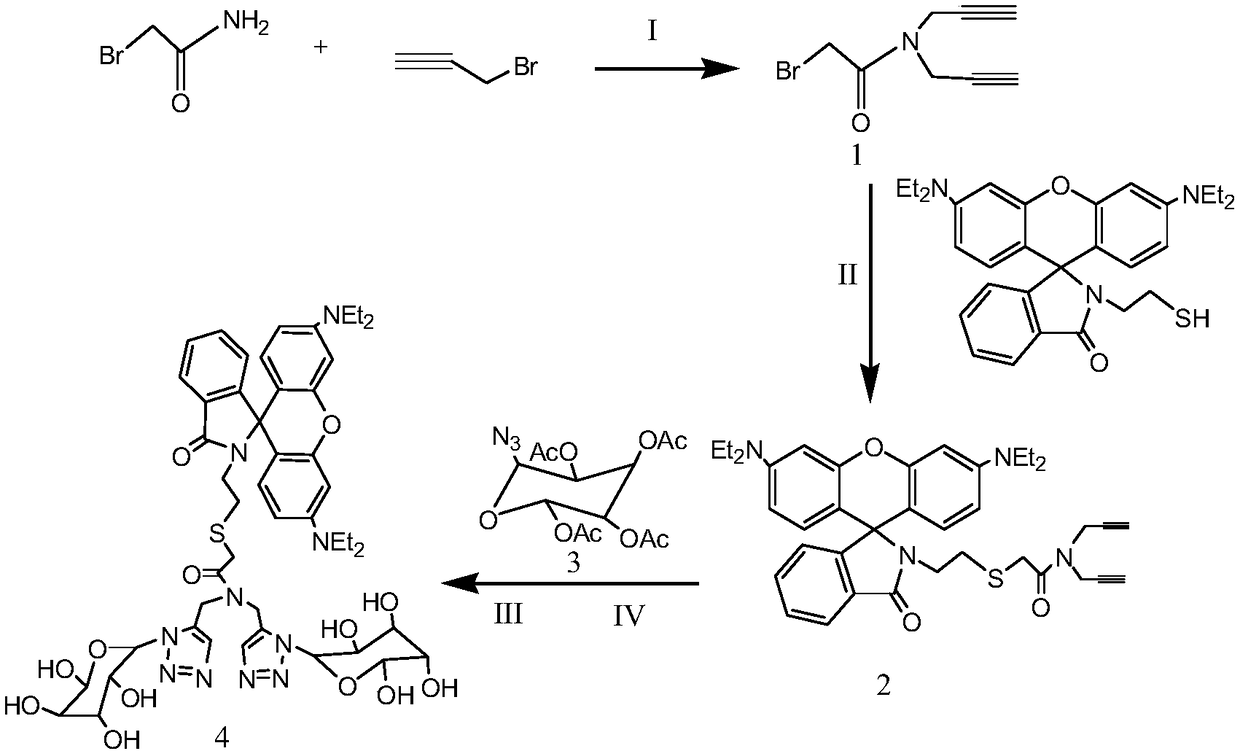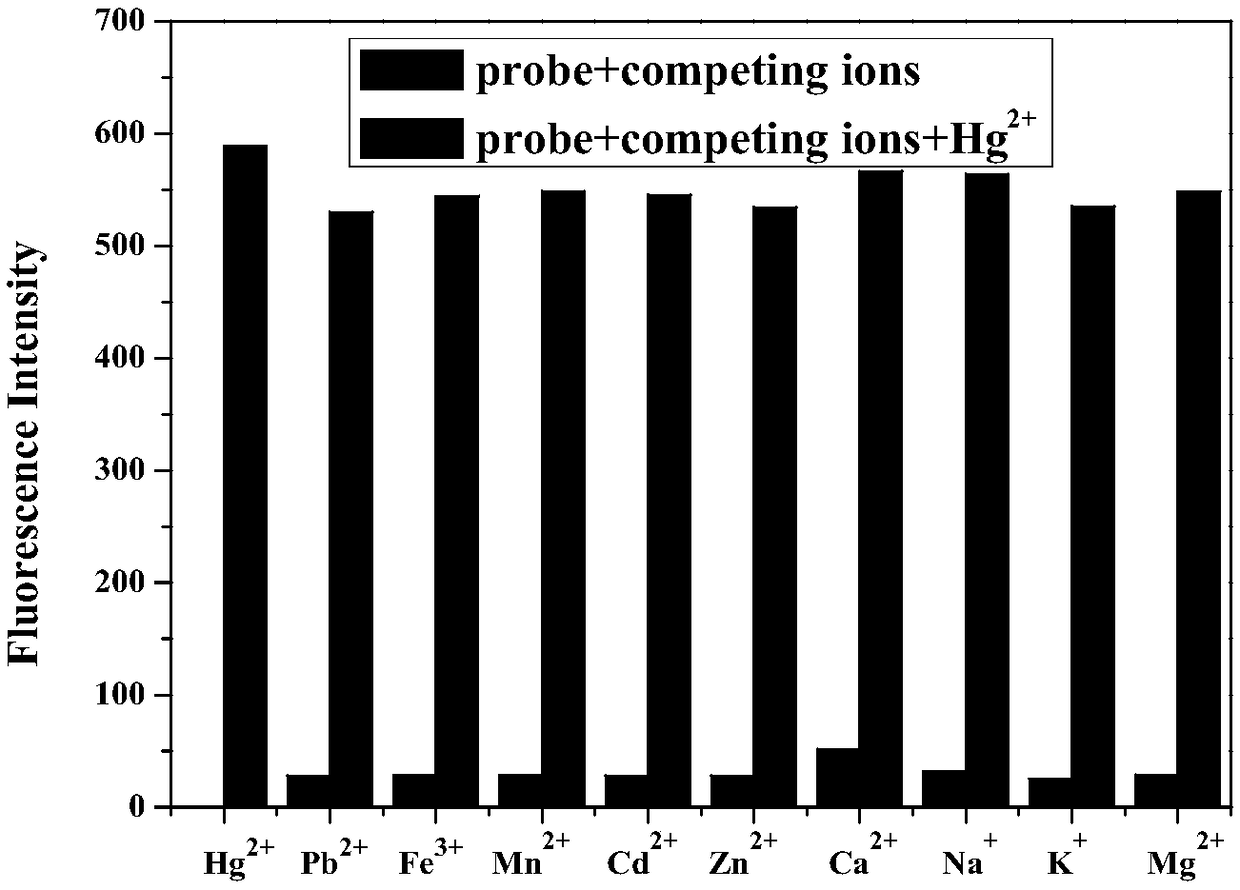Fluorescent probe for detecting biological cells Hg<2+> and synthetic method of fluorescent probe
A fluorescent probe, biological cell technology, applied in the direction of sugar derivatives, sugar derivatives, fluorescence/phosphorescence, etc., can solve the problems of poor selectivity, poor water solubility, and low sensitivity of fluorescent probes, and achieve good anti-interference ability and resolution. The effect of short time and high detection sensitivity
- Summary
- Abstract
- Description
- Claims
- Application Information
AI Technical Summary
Problems solved by technology
Method used
Image
Examples
Embodiment 1
[0030] (1) KOH (5.60g) and anhydrous THF (20mL) suspension was cooled to -5°C, N 2 Protect. Add 2-bromoacetamide solution dissolved in anhydrous THF to KOH and anhydrous THF suspension drop by drop, react at -5°C for 10 minutes after addition, add propyne bromide dropwise, react at -5°C for 10 minutes, then control the temperature React overnight at 35°C, add deionized water, CHCl 3 Extraction, washed with saturated brine, anhydrous MgSO 4Dry, filter, concentrate, and purify by column chromatography to obtain a yellow liquid (compound 1);
[0031] (II) Cool NaH (0.01mol) and anhydrous THF (10mL) suspension to -5°C, N 2 Protect. Dissolve rhodamine lactam (0.01mol) in anhydrous THF (15mL), add dropwise to the reaction solution under stirring, react at -5°C for 30min after the addition, and then add the pre-configured solution (0.01mol compound 1 and 10mL Anhydrous THF) was added dropwise to the reaction system, after the addition was completed, the temperature was controlle...
Embodiment 2
[0035] Such as figure 2 As shown, add 5 times the equivalent of K to the probe solution + 、Na + , Ca 2+ , Mg 2+ , Zn 2+ 、Cd 2+ , Mn 2+ , Fe 3+ , Pb 2+ When ionized, the probe solution is colorless, and the fluorescence intensity at 580nm does not change. It can be seen that the probe maintains its original structure and can exist stably in these solution systems. When Hg is added to the probe solution 2+ After that, the solution changed from colorless to red, and the fluorescence intensity at 580nm was obviously enhanced, and a strong emission peak appeared. This is due to Hg 2+ Reaction with the probe causes the rhodamine helix to open, resulting in fluorescence emission.
Embodiment 3
[0037] Such as image 3 As shown, taking the fluorescence intensity at the position of the maximum emission peak as the ordinate, and the metal ion as the abscissa, first add 5 times the equivalent of interference ions (K + 、Na + , Ca 2+ , Mg 2+ , Zn 2+ 、Cd 2+ , Mn 2+ , Fe 3+ , Pb 2+ ), and then add 3 times the equivalent of Hg 2+ , the solution turns red immediately from the colorless state, and its fluorescence intensity is tested. It can be seen from the figure that in the presence of other interfering ions, the probe is not sensitive to Hg 2+ Still have good recognition ability.
PUM
 Login to View More
Login to View More Abstract
Description
Claims
Application Information
 Login to View More
Login to View More - R&D
- Intellectual Property
- Life Sciences
- Materials
- Tech Scout
- Unparalleled Data Quality
- Higher Quality Content
- 60% Fewer Hallucinations
Browse by: Latest US Patents, China's latest patents, Technical Efficacy Thesaurus, Application Domain, Technology Topic, Popular Technical Reports.
© 2025 PatSnap. All rights reserved.Legal|Privacy policy|Modern Slavery Act Transparency Statement|Sitemap|About US| Contact US: help@patsnap.com



